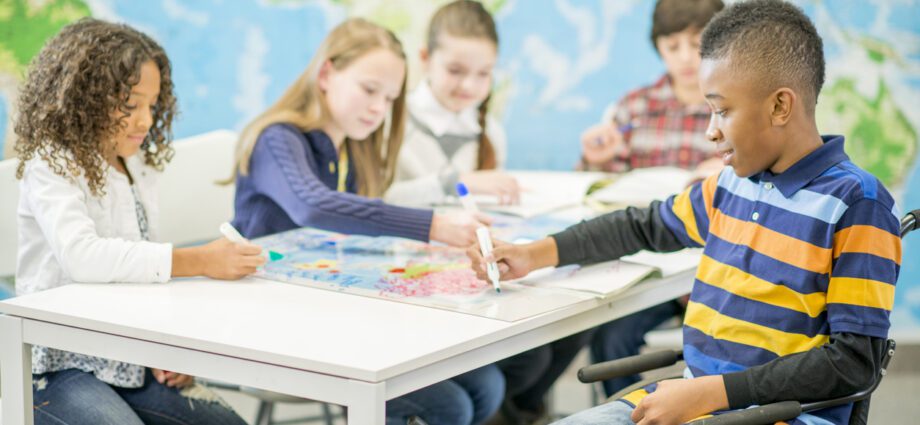Contents
Teaching children with disabilities: an individual principle, conditions
Teaching children with disabilities is successfully carried out in educational institutions – kindergartens, schools, colleges and universities. Various forms of the educational process for children with disabilities of school age are possible – study in a correctional institution, home schooling or a comprehensive school with inclusive classes. Preschool education in the family should not be underestimated, when the character of the child is being formed.
Principles and conditions for choosing an individual teaching method
Education and upbringing of children with disabilities begins in the family. This process requires a lot of love, hard work and fortitude from parents. The first years of life should not be missed, babies under 7 years old have great abilities to perceive information and the possibility of compensating for the peculiarities of development. Parents do not need to be afraid of difficulties. The combination of medical procedures, good communication at the everyday level, walks in the fresh air will help the child develop normally in the direction available to him.
When teaching children with disabilities, the teacher conducts individual lessons
In correctional kindergartens and schools, when teaching children with disabilities, special techniques are used that depend on the type of disease and the individual needs of the child. Inclusive educational institutions have spread, where children with special needs study together with healthy children. In inclusive classrooms, they create an adapted environment, use various technical devices and effective methods. For example, visual learning plays a big role at any age. This method is good for everyone, except for guys with poor eyesight. When looking at bright pictures, cartoons, presentations, the child learns the material better.
In addition to physical characteristics, when choosing a teaching method, teachers take into account the character of the child. Many children with disabilities have behavioral disorders, if the teacher does not take this into account, his lessons will not be learned, will cause rejection. The results of the assimilation of knowledge and skills in children with disabilities are assessed only in relation to themselves.
Teaching the independence of children with disabilities, art therapy
Labor and physical development is useful for children with disabilities. In kindergarten and school, this is therapeutic gymnastics, games, and labor lessons.
At home, the child performs feasible assignments, learning independence and responsibility – watering flowers or feeding fish. It is not the material significance of the case that is important, but a responsible approach to the assignment.
Learning to be independent is just as important as gaining knowledge.
A universal method of developing abilities that is suitable for any age is art therapy. They read books to the child, listen to musical works with him, attend puppet shows, etc. Thanks to creative, sports activities and games, the child’s thinking develops, his interest in learning increases.
The task of parents and teachers is to help children learn about the world and become full members of society. At the heart of the study of children with disabilities is taking care of them, the assessment of knowledge does not fit the general standard, but shows the dynamics of development.










